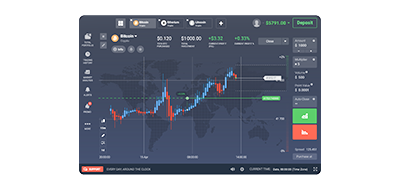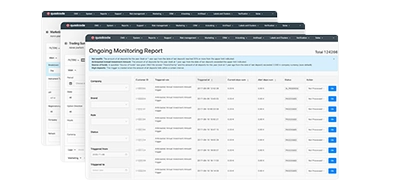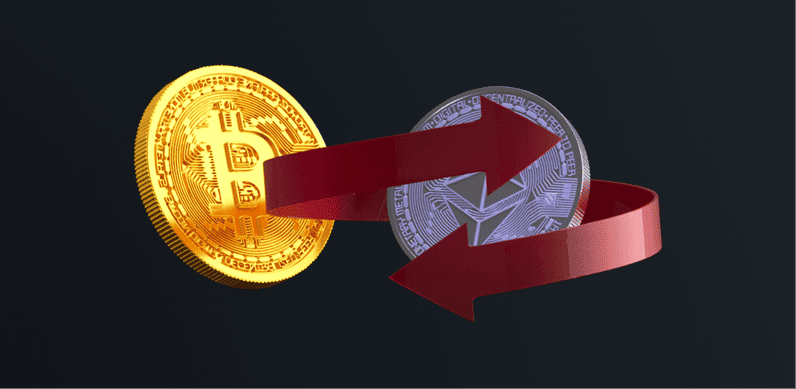Volver
Contents
¿Qué es una orden limitada?

Demetris Makrides
Senior Business Development Manager

Vitaly Makarenko
Chief Commercial Officer
Una orden limitada es una herramienta de negociación que permite a los operadores comprar o vender activos financieros a un precio establecido previamente. Las órdenes limitadas se diferencian de las órdenes de mercado en que no se ejecutan con la misma rapidez que las órdenes de mercado. Las órdenes limitadas brindan a los operadores control sobre sus transacciones, ya que se ejecutan solo cuando el precio del activo alcanza el nivel preciso que han establecido para establecer puntos de entrada y salida precisos en sus operaciones.
Cómo funciona una orden limitada
La orden limitada de un individuo se registra instantáneamente en el libro de órdenes de la bolsa correspondiente desde su creación. Permanece en el libro de órdenes de la bolsa hasta que el mercado cumpla las condiciones especificadas para la operación y se alcance el precio designado. En caso de que el precio de mercado iguale o supere el precio especificado, la orden del operador se completa al precio óptimo.
Existe la posibilidad de que la orden que ha establecido no se active. Esto puede ocurrir si el precio nunca alcanza el precio establecido en la orden. Otro escenario podría ser que su operación solo se ejecute parcialmente. Si el activo negociado se encuentra en un mercado con menor volumen de negociación y baja liquidez, incluso si el precio alcanza el límite establecido, solo una parte de la orden podría ejecutarse, mientras que el resto permanece pendiente en el libro de órdenes hasta que haya suficiente liquidez y un precio favorable para completarla.
Supongamos, por ejemplo, que desea comprar un activo cuyo precio actual es de $50. Una vez que alcance los $48, desearía comprarlo. Por lo tanto, establecería una orden limitada de $48 que solo se ejecutará cuando el precio baje a este precio o menos, lo que significa que obtendrá el precio solicitado o incluso mejor. Lo mismo ocurre si desea vender. Puede crear una orden limitada de venta a $52 si ese es el precio al que desea vender. Esta orden se ejecutará solo cuando el precio alcance este punto.
Ventajas de las órdenes limitadas
Quizás la mayor ventaja de usar una orden limitada al operar es que proporciona un mayor control de precios. Dado que el operador establece el precio deseado, tiene la seguridad de que, si se ejecuta, será a ese precio exacto o mejor. Cuanto más volátil sea el mercado, mayor será esta ventaja. En este tipo de mercado, una orden de mercado puede hacer que los operadores paguen más de lo esperado o obtengan menos ganancias de las esperadas debido a las fluctuaciones repentinas del mercado. Sin embargo, una orden limitada elimina este problema y ofrece a los operadores protección de precios. Con una orden limitada, el operador no se verá sorprendido por un alza repentina o una caída inesperada de los precios, sino que garantiza que sus operaciones se mantengan alineadas con su estrategia, análisis y expectativas. Esto también permite a los operadores gestionar sus riesgos y la imprevisibilidad de los mercados financieros.
Una ventaja significativa de optar por una orden limitada en lugar de una orden de mercado es la posibilidad de que los operadores planifiquen cuidadosamente sus estrategias de trading. Tras finalizar su análisis y comprender las tendencias del mercado, los operadores pueden colocar una orden limitada para un activo y continuar con sus demás tareas sin necesidad de supervisar constantemente los movimientos de precios en una pantalla. No tienen que sentarse frente al gráfico a esperar a que el precio alcance el nivel deseado. Esto les da a los operadores más libertad que simplemente estar pegados a un monitor.
Desventajas de las órdenes limitadas
Si bien las órdenes limitadas ofrecen ventajas, también presentan ciertas desventajas a considerar. Una desventaja evidente es la posibilidad de que la orden no se ejecute si el mercado no alcanza el precio especificado. Esta situación puede ser especialmente frustrante en mercados cambiantes, cuando el precio se acerca al precio, pero no lo suficiente como para activar la orden limitada. Esto puede ser especialmente preocupante si el análisis del operador es acertado, pero se pierde la oportunidad de operar porque la orden limitada no se ejecuta y el precio se desvía.
Otra desventaja del uso de órdenes limitadas surge al operar en mercados con baja liquidez. Como se mencionó brevemente, en estos mercados el precio puede alcanzar el límite establecido, pero podría no haber suficientes compradores y vendedores en ese momento. Su orden limitada podría no ejecutarse o ejecutarse solo parcialmente. Esto puede generar problemas al intentar mantener una estrategia, obligando al operador a ajustar sus otros objetivos o a realizar operaciones adicionales para alcanzar su objetivo de ganancias original.
El uso de órdenes limitadas también conlleva cierta complejidad, lo que puede suponer un reto para los operadores principiantes e inexpertos. Los operadores deben estar atentos a las órdenes no ejecutadas o parcialmente ejecutadas y no olvidarlas mientras operan. Por ejemplo, supongamos que un operador olvida una orden limitada establecida pero no ejecutada. Esta orden permanecerá en el libro de órdenes indefinidamente y, si no se elimina, puede activarse más adelante, cuando ya no forme parte de la estrategia, lo que se conoce como "orden olvidada". Esto puede provocar pérdidas en las operaciones o la falta de margen suficiente para las posiciones abiertas u otras órdenes limitadas. Al utilizar una orden de mercado, esta complejidad se simplifica, ya que todas las órdenes se ejecutan inmediatamente. Por lo tanto, al utilizar órdenes limitadas como parte de la estrategia de trading general, los operadores deben prestar especial atención y una mejor gestión de activos.
Consejos para el uso de órdenes limitadas
Al colocar órdenes límite en escenarios de trading, es importante considerar el realismo de sus precios límite en lugar de centrarse únicamente en maximizar el potencial de ganancias fijando precios muy alejados del precio actual del mercado, ya que esto podría llevar a perder oportunidades si el mercado no alcanza su precio objetivo. En lugar de buscar ganancias con precios muy alejados del límite, tenga en cuenta las condiciones actuales del mercado y considere establecer un precio que logre un equilibrio entre ser alcanzable y estar en línea con la realidad del mercado. Este enfoque práctico aumenta las posibilidades de que su orden se ejecute y le ayuda a evitar perder oportunidades de trading valiosas.
Un factor clave a considerar al aprovechar al máximo las órdenes limitadas es comprender y aprovechar las diversas opciones de "tiempo de vigencia" que ofrecen. Por ejemplo, la orden "Válida hasta Cancelación" (GTC) permanece activa hasta que se ejecuta o usted la cancela; esto permite que su orden permanezca abierta y tenga la oportunidad de completarse siempre que las condiciones del mercado se ajusten al precio especificado. Por otro lado, una orden "Inmediata o de Cancelación" (IOC) debe completarse de inmediato o se cancelará, lo que representa un enfoque más agresivo en mercados que cambian rápidamente. Seleccionar el plazo adecuado puede influir significativamente en la efectividad de su plan de órdenes limitadas.
Si bien las órdenes limitadas ofrecen automatización en las actividades de trading y comodidad a los operadores, es importante mantenerse al día con el mercado y realizar un seguimiento constante de sus órdenes, ya que las condiciones del mercado están sujetas a cambios repentinos y lo que inicialmente parecía una orden bien colocada puede requerir ajustes con la aparición de nueva información. Revisar sus órdenes y realizar ajustes o cancelaciones oportunos cuando sea necesario para alinearlas con su estrategia de trading y la dinámica actual del mercado garantiza que sus operaciones se ajusten a su visión del mercado.
Para mejorar aún más su estrategia de trading y controlar los puntos de entrada y salida de sus operaciones, considere combinar órdenes limitadas con otras tácticas de trading. Por ejemplo, puede usar una orden limitada junto con una orden stop loss para gestionar eficazmente los riesgos, regulando el momento de entrada y salida de las operaciones. Además, combinar órdenes trailing stops con órdenes limitadas puede ayudarle a asegurar ganancias cuando el mercado fluctúa favorablemente, a la vez que protege contra reversiones. Utilizar un enfoque como este puede mejorar significativamente su estrategia de trading y permitirle navegar con confianza por las complejidades del mercado.
Conclusión
Las órdenes limitadas son herramientas extremadamente poderosas, si se utilizan correctamente, que permiten a los operadores un mayor control sobre la acción del precio al entrar o salir de operaciones. Permiten a los operadores ser más precisos al operar y mejoran su gestión del riesgo en mercados volátiles y fluctuantes. Cuando los operadores dominan el uso de las órdenes limitadas y conocen sus dificultades e inconvenientes, pueden tomar mejores decisiones de trading, gestionar mejor sus estrategias y obtener ganancias de forma más consistente.
Actualizado:
19 de diciembre de 2024




